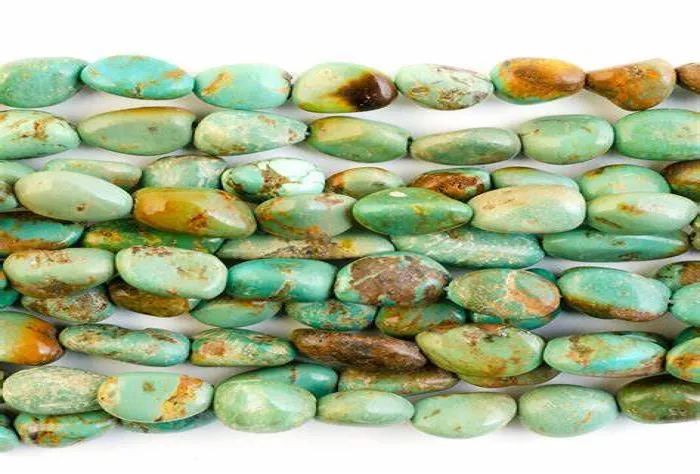Turquoise is a captivating color that blends blue and green, evoking images of tropical waters, clear skies, and precious gemstones. But beyond its beauty, turquoise carries deep symbolism across cultures, history, and psychology.
In this article, we will explore:
- The Origins of Turquoise Color
- Turquoise in Nature
- Cultural and Historical Symbolism
- Psychological and Emotional Meaning
- Turquoise in Fashion and Design
- Spiritual and Healing Properties
- Modern Interpretations of Turquoise
By the end, you will understand why turquoise is more than just a color—it’s a symbol of wisdom, protection, and harmony.
The Origins of Turquoise Color
Turquoise gets its name from the gemstone of the same name. The word “turquoise” comes from the French pierre turquoise, meaning “Turkish stone.” This is because the stone was first brought to Europe from Turkey, though it originally came from mines in Persia (modern-day Iran).
The color turquoise sits between blue and green on the color spectrum. It is often described as:
- A bright, sky-blue with a hint of green
- A sea-green with a soft blue undertone
- A vibrant teal-like shade
Because of its natural variations, turquoise can range from pale aqua to deep jade-like tones.
Turquoise in Nature
Turquoise is a color commonly found in nature. It appears in:
- Oceans and lagoons – Tropical waters often have a turquoise hue due to sunlight reflecting off white sand and coral.
- Gemstones – Turquoise, aquamarine, and some forms of opal display this color.
- Birds and insects – Peacock feathers, kingfishers, and some butterflies have stunning turquoise shades.
- Plants and flowers – Certain succulents and hydrangeas bloom in soft turquoise tones.
Because it is linked to water and sky, turquoise often symbolizes freshness, tranquility, and life.
Cultural and Historical Symbolism
Turquoise has held deep meaning in many ancient civilizations.
Native American Culture
Turquoise is considered a sacred stone.
It represents protection, strength, and connection to the spirit world.
Warriors and hunters wore turquoise for good luck and safety.
The Navajo, Zuni, and Hopi tribes used it in jewelry, ceremonies, and art.
Ancient Egypt
Egyptians associated turquoise with the goddess Hathor, the deity of joy and motherhood.
Pharaohs and nobles wore turquoise jewelry for protection in the afterlife.
The famous burial mask of King Tutankhamun was decorated with turquoise.
Persian and Middle Eastern Beliefs
In Persia, turquoise was a symbol of heaven and immortality.
Warriors embedded turquoise in their swords and armor for protection.
It was believed to change color to warn of danger or illness.
Tibetan and Buddhist Traditions
Turquoise is one of the “Seven Sacred Stones” in Tibetan culture.
It represents wisdom, compassion, and spiritual enlightenment.
Monks used it in prayer beads and ritual objects.
European Folklore
In medieval Europe, turquoise was thought to protect against poison and evil spirits.
It was a popular stone for rings and amulets.
Psychological and Emotional Meaning
Color psychology studies how colors affect our emotions and behavior. Turquoise has unique effects on the mind:
Calmness and Relaxation
Like blue, turquoise promotes peace and reduces stress.
It is often used in spas and meditation spaces.
Clarity and Communication
Turquoise enhances clear thinking and honest expression.
It helps with public speaking and emotional balance.
Creativity and Inspiration
The mix of blue (calm) and green (growth) stimulates creativity.
Artists and writers often use turquoise to spark new ideas.
Emotional Healing
Turquoise is linked to emotional recovery after trauma.
It encourages self-acceptance and forgiveness.
Turquoise in Fashion and Design
Turquoise is a versatile color in fashion, interior design, and branding.
Fashion and Jewelry
Turquoise gemstone rings, necklaces, and bracelets are timeless.
The color complements both warm and cool skin tones.
It is popular in bohemian, beachy, and Southwestern styles.
Interior Design
Turquoise walls or décor create a refreshing, airy feel.
It works well in bathrooms, bedrooms, and coastal-themed spaces.
Paired with white, gold, or wood, it adds elegance.
Branding and Marketing
Companies use turquoise to convey trust, freshness, and creativity.
Brands like Tiffany & Co. use turquoise in their packaging for luxury appeal.
Spiritual and Healing Properties
Many believe turquoise has metaphysical benefits:
Protection
Ancient cultures wore turquoise to ward off negative energy.
It is still used as a talisman for safe travel.
Physical Healing
Some think turquoise strengthens the immune system.
It is associated with soothing throat and lung issues.
Chakra Alignment
In yoga and energy healing, turquoise connects to the throat chakra.
This chakra governs communication and self-expression.
Meditation and Mindfulness
Meditating with turquoise promotes inner peace.
It helps release negative thoughts and fears.
Modern Interpretations of Turquoise
Today, turquoise remains a beloved color in many ways:
A Symbol of Individuality
Turquoise stands out—it’s for those who embrace uniqueness.
It represents free-spirited and adventurous personalities.
Environmental Awareness
The color is linked to ocean conservation and eco-friendly movements.
Many sustainable brands use turquoise in their logos.
Digital and Web Design
Websites and apps use turquoise for a clean, inviting look.
It is popular in health, wellness, and travel industries.
Conclusion
Turquoise is more than just a color—it’s a bridge between earth and sky, past and present. It symbolizes:
- Protection (ancient amulets, warrior traditions)
- Healing (emotional balance, physical wellness)
- Wisdom (spiritual growth, clarity)
- Joy (vibrant energy, creativity)
Whether in jewelry, art, or décor, turquoise brings a sense of calm and inspiration. Its timeless appeal ensures it will remain meaningful for generations to come.
Related topics:
Why Are Diamond and Turquoise Bands So Special?
Why Use Turquoise in Fidget Spinners?
What Makes Diamond Turquoise So Special?


